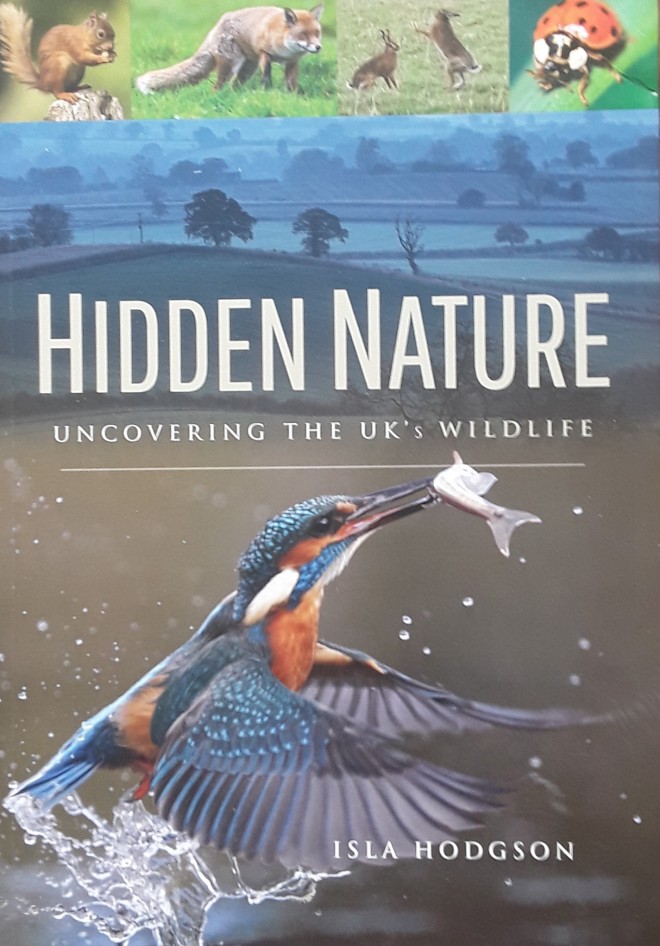
Reviewer: Michael Keith Rimmer
Title: Hidden Nature: Uncovering the UK’s Wildlife
Author: Isla Hodgson
Total Number of Printed Pages: 192
Rating Scale (1: Very Poor, 10: Excellent): 7 ½
___________________________
In the Forward to this volume, the author notes that ‘…Wildlife is everywhere in Britain, if you just know where to look’, and that she ‘…Decided to embark on a little mission; to write about our under-appreciated wildlife, in the hope that [she] could enthuse others to get passionate about it too’. The result? A ‘…Guide to re-discovering Britain’s hidden wild life’, written in the hope that ‘It inspires you [the reader] to step outside the door and seek out just what the natural world has to offer’. Admirable sentiments indeed.
The volume is arranged in four sections, preceded by a Foreword in which the author relates the circumstances which led to the book being written and why the format used was chosen and a precis of what is to follow. The main part of the volume comprises four sections (analogous to Chapters, but not notated as such). In the author’s opinion these constitute the main habitat types found in the United Kingdom, and comprise coasts, freshwater, inland areas (forests, grasslands, mountains) and urban spaces respectively. Sub-chapters appear within each larger Chapter. These concern specific geographical areas and the creatures found within them while also recording the author’s personal experiences when observing the creatures under discussion.. As a result, the reader is introduced to a variety of wildlife that includes seals, red deer, various types of birds, foxes and garden insects. As noted, the experiences are all personal, and while certainly introducing the reader to the subject, owe more to the ‘What I did on my holidays’ style of writing rather than serious scientific study. That detail notwithstanding, the author has included what she describes as ‘…A wee section that details how you [the reader] might find those species or habitats…the best places across the country to catch a sighting [of the creature being described] [and] where applicable how to encourage these animals to your local patch and …how we can help them’. While admirable in sentiment, these ‘Wee sections’ are arranged in a variety of formats with little consistency being evident. A section titled A Final Word presents and elaborates-on the author’s view that ‘’…The human race are responsible for the rapid increase in [species] extinction rates’ and provides ideas as to how this may be prevented and reversed. It is followed by the volume’s final section; a three-paragraph section titled Thank you, within which all who contributed to it (creatures included) are acknowledged. The volume contains Colour Photographs, Line Drawings and Half-tone Illustrations by the author. Their existence is not mentioned on the Contents page. .Despite discussing various locations around the British Isles, the volume contains no Maps. No Index is provided.
As already noted, this volume contains neither Maps nor Index, details which could be problematic for those readers living outside the United Kingdom seeking information concerning both the wildlife described and their locations within the British Isles. For this reviewer, a General Ordnance Survey Map showing (at minimum) such locations as the Ythan Estuary and the Isle of Canna would have been helpful. The absence of an Index also creates unnecessary problems for those who may not know where the creature they are seeking may be found within the volume. The title (for example|) Garden Birds (a subsection of Section 4), is meaningless if you don’t know if the bird you are observing fits that category, and where, within the volume, is a ‘Common Pipistrelle’ to be found? Without an Index, one cannot know. Whether or not such an omission is important will depend-upon the individual reader. A separate ‘Identification / Recognition’ section containing a brief description and silhouette of the creatures mentioned within the volume, would also have been helpful.
This is an idiosyncratic volume, written by someone who is clearly passionate about her subject. It is likely to appeal to those interested in ‘Conservation’ as a concept, those seeking advice as to what can be done to assist survival of endangered species, and to readers simply interested in learning more about the creatures which may be lurking in their own immediate area – ‘The ‘critters’ in the back yard’, if you will. Readers seeking beautiful photographs of British wildlife may also find it of interest.
On a Rating Scale where 1: Very Poor, 10: Excellent, I have given this volume a 7 ½.
______________________________
